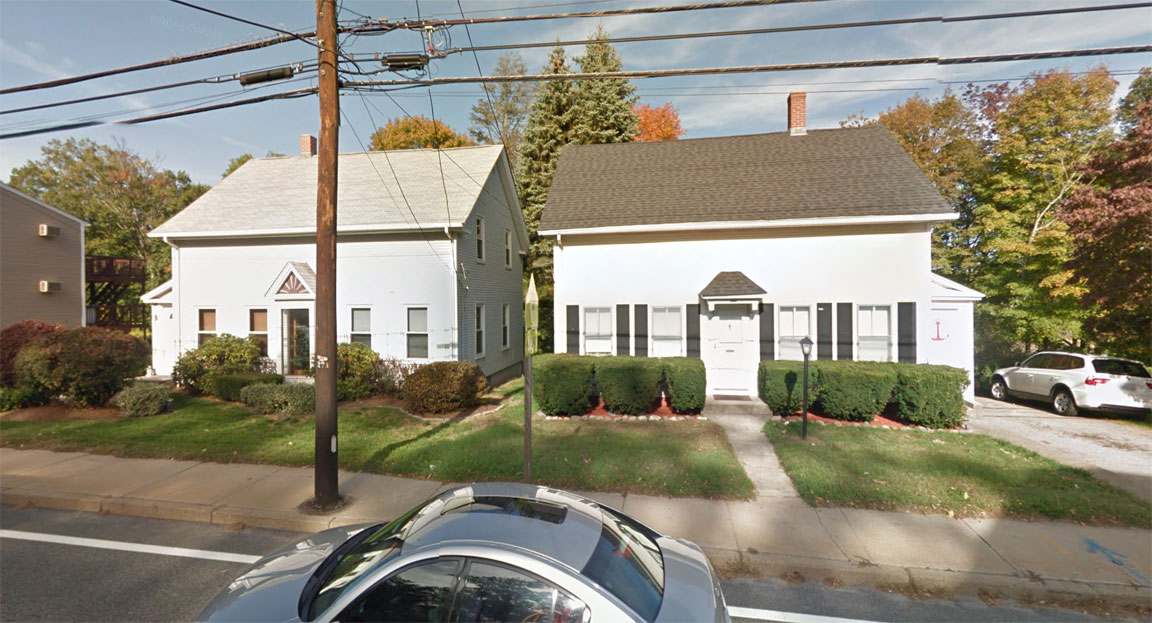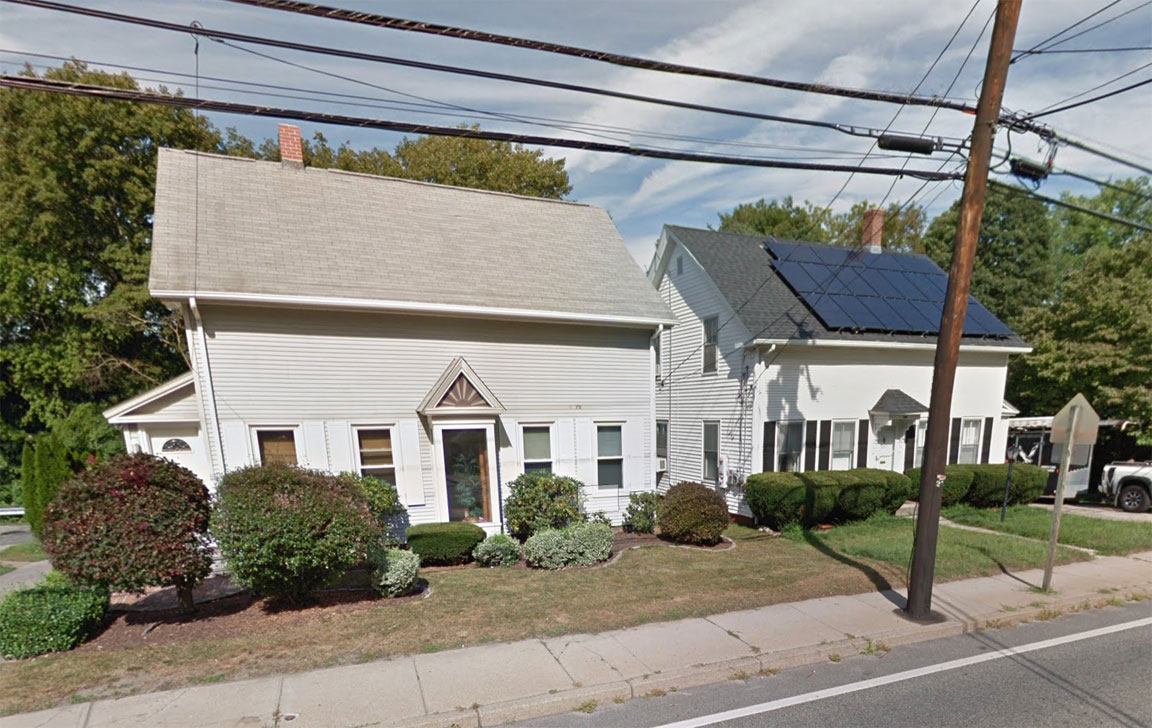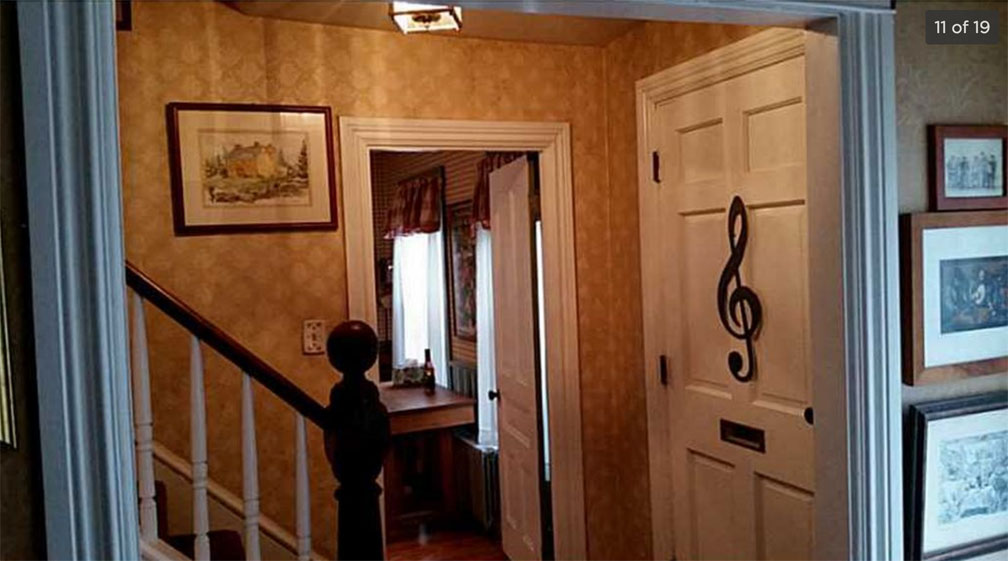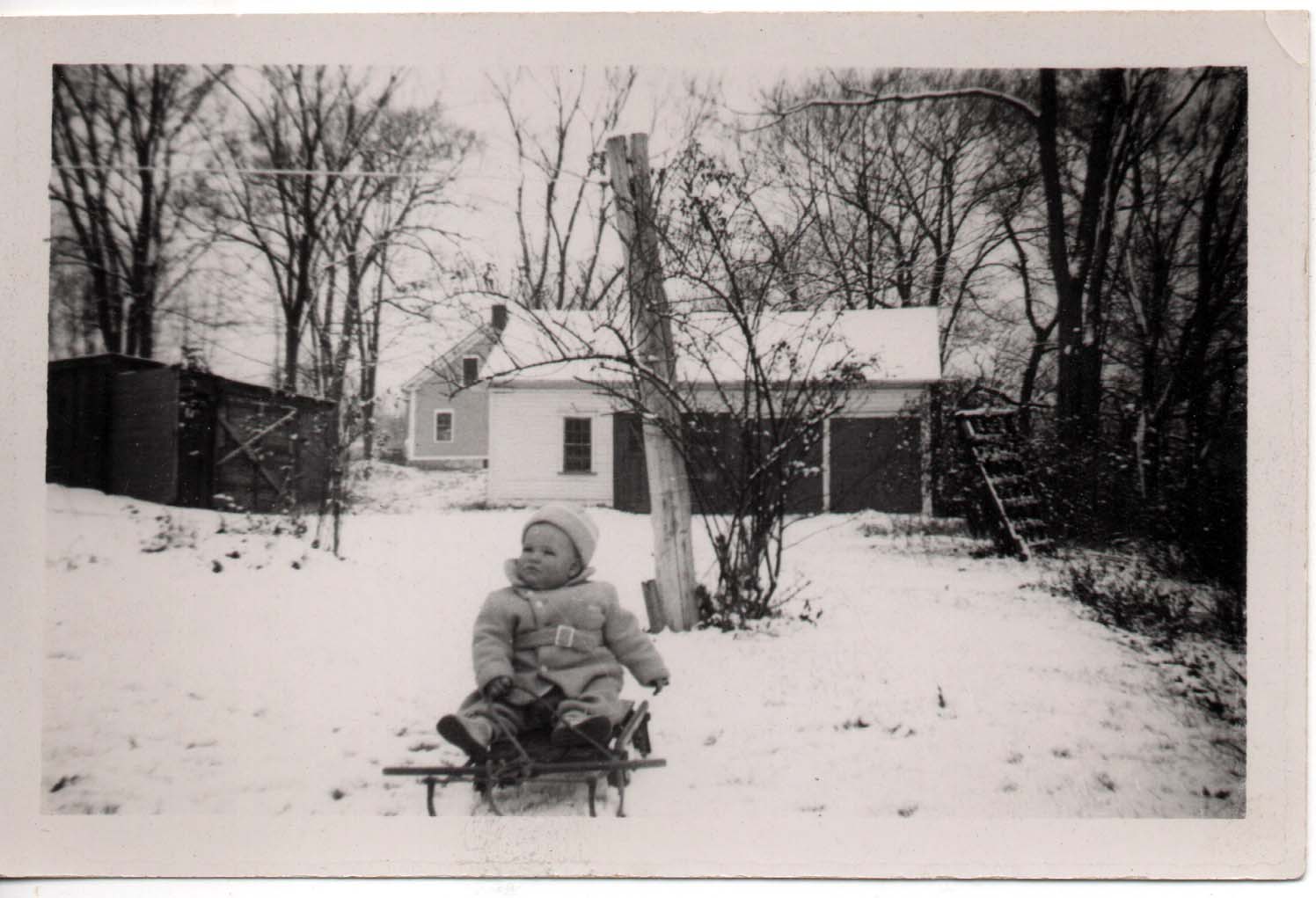

1333 on left, 1329 on right lower image added 6/19
On Mar 30, 2017, at 4:40 PM, Grant MacLaren
My grandfather, Charles Merchant (1876-1922) built these two houses in 1904.
Pretty good for a 28 year old.
They stand on "rubble stone" foundations. I remember seeing "knob and tube"
wiring in both houses. 1333, on the left, had a big wood burning stove in its
kitchen when I was a small boy. Bath water was heated in a kettle on that stove and hauled
to the claw-foot bath tub on the second floor.
When built, there were no toilets in the houses, but by the time I was there as a boy there were toilets, but no running hot water. By WW II there were toilets and hot running water.
My grandmother "Ma", or Elizabeth Ann Merchant, would take me by steam train from Philadelphia to Providence during summer vacations. I would be dressed for traveling in dark shorts and white shirt. The train car windows opened, so by the time we got to Providence, my arms and sleeves would be covered in coal soot.
Our family lived in 1329 (on the right) the summer we moved to California (1949) and
when my folks moved from Elmhurst back to RI -- before they built "Bethany Lane."
Charles was an "ice man" who used horses to haul and deliver ice. I have an
ice saw of his. There was a horse barn to the left, and maybe 150 ft. behind the
street lot line. It was well made, like the houses. It also stood on rocks as a
foundation. Horse barns of wood rot from the foundation up. In 1959 I jacked up
the entire barn, built forms for a foundation and had a local contractor pour a
concrete foundation. I then reframed the bottom three or four feet of the barn,
using used machine tool packing crate wood. I was quite surprised to find siding
boards that perfectly matched the original barn siding.
From: Madalyn Drew
The "old pics" Madalyn mentioned:
3/31/17 -- Hi Madalyn,
My earliest recollections of 1329 are the many mornings, while awaiting
a ride in his Model "A", watching Uncle Fred shave in the basement.
He'd throw his shaving water on the clematis plant outside the basement
door and claim it was his whiskers that made it bloom, then . . .
Following "clipped" from a 2007 letter:
"Ma" would take me "up to Providence" on the train. The train car windows opened and I could ride with my elbows out the window. It was a steam train; my white shirt wasn't very white by the time we got to Providence. At one stop, New Haven, a candy man would get on the train to sell his wares. He'd get off at the next stop to ride back. We carried our own treats, so didn't buy from him. Uncle Billy would meet us at the Providence station, very proud of his car -- a Plymouth.
On my way to or from Albert's, I'd walk atop Douglas Avenue stone walls in front of the school where Aunt Ethel taught for awhile.
Evenings "up at the corner" hearing jokes and stories by Mickey, Eddie and Blackie DeLuca -- and others.
Watching Albert retrieve groceries from his shelves with a long wooden pole with pincers at one end mimicking the squeezing of a metal handle at the other end. He'd write prices in pencil on brown paper bags and quickly total them. Many of his sales were "on credit." Albert's mother would sometimes sit behind him at the counter. She spoke no English. He could find time between grocery and meat sales to make a coffee cabinet, or vanilla soda, for me.
The other day, I gave a store clerk a dollar bill, a dime and two pennies for a soda that cost 87 cents. She punched all that into her computer and gave me one quarter change, saying "I wish I could learn to do that." I thought of Albert.
Riding to and from Johnson's Pond in Coventry -- standing up in the homemade truck bed Ice had installed in his Model "A" Roadster, looking forward over the roof. (That photo was taken many years after our rides to Coventry.) My eyes would water from the cold wind in my face. The roof was covered in black, grained, oilcloth-like material. I can feel it today.
On Johnson's Pond, rowing one of Uncle Richard's heavy, flat bottom boats. I could sit in that boat for hours, feeling the movement resulting from pulling long oars.
Jean and Howard Drew putting their married initials in fireplace mortar before they were married.
(Subject to write about . . . Flip and Pal -- Point Judith -- Clam Cakes -- Coffee Syrup -- a "Classic" Cottage)
The trailer for Tink's Amesbury skiff needed Model "T" tires, so the boat could be taken to Twin Rivers. No tires that size could be found, so Howard wrapped the rims with worn-out canvas fire hose, wired in place, to take the place of the tires. The makeshift tires didn't work. The wire wore through and the hose flapped.
Donald had a girlfriend who worked in her parent's ice cream store. Turner's? I thought I'd like to have a girlfriend who owned an ice cream store.
Donald and Herbert Hopkins turned over in the canoe at Johnson's Pond. I rowed the heavy boat out to "save" them. Their biggest loss was a soaking-wet package of cigarettes.
Ice and Dick Hill had an Army generator parked in the woods near the cabin. When you switched a light "on," the generator would start and the light would light dimly, then increase to normal brightness as the engine came up to speed. Dick Hill was the only man I knew who had his own fire station.
Where do ya work, Howie?
The closed-cab Dodge fire truck was a tanker. The open truck with mechanical brakes and wooden spoke wheels was a Larrabee (sp.?) Once I got to ride in the big truck to a funeral home in Centerdale -- to pick up chairs for a clambake at the fire house. Howard drove. The chief, Obie Christianson, rode in the seat beside Howard. The downhill run into Centerdale tested the limits of those brakes.
There was an ice box in Aunt Ethel's kitchen, next to the door to the basement stairs. There was coal-fired stove in the kitchen where we heated water, carried it upstairs in a kettle to take a bath in the clawfoot cast iron tub.
Howard had a radio with a wire antenna. He'd hook it to his bedspring for good reception -- or to his toe for the very best reception.
I was always up before Uncle Fred. It might have been 10 a.m. before I was permitted to go over to 1329 and watch him make his breakfast of Cream-of-Wheat in a small yellow enamel pan, using water he had first used to soft-boil an egg. He'd tell me Duncan didn't like him to wring out the dishcloth -- it wore out the fibers. Fred said Duncan had instructed him to "Just pat it dry."
Then we'd go downstairs where Fred would shave, using another small enamel pan. When he was finished shaving, he'd empty his shaving water on Auntie's clematis. Fred said it was his whiskers that produced such beautiful blooms.
With his ablutions out of the way, Fred would go to his candy stash -- hung overhead from floor rafters by string in doubled brown paper bags -- and select items for distribution later in the day. Then we'd walk to the shed, where Fred would back his "A" out to check the oil, and usually play with the spark advance to get one or two good loud backfires.
We'd stop by Notarantonio's Ford for gasoline. (Now a Lowes) The fellow would put some gas in the cowl tank and try to convince Fred to sell the "A" to him. We would stop at least once for ice cream, and then on the way home for a quart of raw milk from the dairy on Smithfield Road. We'd watch as the fresh milk ran over the chiller's cooling coils, and filled the glass bottle Fred had washed earlier in the day at 1329. Then it was down Cushing Lane to Douglas Avenue and home.
Another pretty good web page hand-coded by
|

